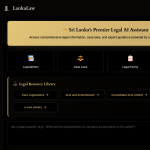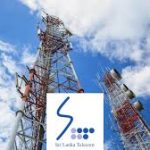This checklist provides guidance for protecting attorney-client privilege and work product in the environment of generative artificial intelligence (AI).
The checklist specifically gives an overview of AI uses in the law today, offers a brief summary of the attorney-client privilege and the work-product doctrine protections, raises attorney-client privilege and work-product doctrine issues regarding the use of generative AI, and offers guidance for safeguarding these protections when using generative AI tools.
AI and the Law
The advent of new technologies often brings opportunities and risks to the practice of law. The introduction of new AI tools is no exception. Practicing attorneys are using AI tools in various ways, including, for example, with e-discovery. Technology-assisted review software streamlines the discovery and production process by employing a machine-learning algorithm to assist in categorizing documents with the appropriate coding, (e.g., responsive versus nonresponsive), based on how a statistical sampling, or seed set, was manually coded for the review. This saves time and cost for attorneys and clients by leveraging the AI tool to code large volumes of documents for production purposes rather than having individuals manually conduct the review.
Generative AI is a different type of AI tool that uses inputs from various external sources to build a model of the world from which it can create, or generate, new content based on user prompts. As the name connotes, generative AI tools generate new content. These tools warn users how they work and that they need to check any facts before relying on generative content. While these tools can accomplish extraordinary things, they have their limitations, including in the legal profession.
Since the launch of advanced chatbots and other tools based on large language models, the use of generative AI has continued to expand throughout the legal industry. As a result, questions have surfaced surrounding how the use of these technologies would affect traditional legal doctrines, including issues that can implicate attorney-client privilege and the work-product doctrine. So, although generative AI tools have the potential to help deliver better services to clients, attorneys should be aware of the pitfalls that may breach or complicate privilege.
Attorney-Client Privilege and Work-Product Doctrine
Attorney-Client Privilege. The attorney-client privilege protects against disclosure of communications between a client and an attorney made for the purpose of securing legal advice.1 This privilege assures communications held in confidence are safeguarded. A breach of that confidence, such as disclosure to a third party, waives the privilege and the legal protections it carries.
Work-Product Doctrine. The work-product doctrine is a corollary to the attorney-client privilege. The work-product doctrine provides legal protection to written or oral information prepared by or for an attorney during a legal representation, particularly during or in preparation for litigation.2
Generative AI Issues Concerning Attorney-Client Privilege and Work-Product Doctrine
Although generative AI technology offers many benefits, it also presents a wide range of legal obligations and questions concerning privilege:
- If lawyers use generative AI tools related to client communications, are those communications protected by the attorney-client privilege?
- If lawyers use generative AI tools, is that work product protected under the work-product doctrine?
- If legal departments for companies use generative AI, would the work product generated constitute legal work?
- If so, would that work product be protected under the privilege doctrines if it was created in anticipation of litigation?
- What precautions must in-house attorneys take to ensure that the privilege is safeguarded?
Guidance for Safeguarding Attorney-Client Privilege and Work-Product Protection
As the use of generative AI tools continues to expand, in-house and outside counsel face complicated and ever-evolving legal and ethical issues when using these resources. To protect privilege, you should be particularly mindful of potential privacy concerns and take appropriate safeguarding steps when using generative AI tools.
Focus on maintaining privacy. Confidentiality is a key element of both the attorney-client privilege and the work-product doctrine, so a breach in privacy can potentially harm privilege.
✓ Data stored on public AI platforms may not be entirely private to the individual using those public platforms, including:
- Service providers, who may have access to data
- AI engineers or technicians, who may have access to review data and written product to improve their systems
✓ Information entered into public AI reportedly has leaked into other chats with third parties or is being used in training future models, which, even if inaccurate, arguably diminishes an expectation of privacy in public AI tools and thus may work against future assertions of privilege.
Be careful about what prompts you enter into AI tools. Generative AI tools can, in some cases, store both input data, (i.e., the written prompt), and output data, (i.e., the content generated), under various terms of service. The content of that data then can be used by generative AI platforms to maintain and provide its services. As a result:
✓ Prompts that contain sensitive client information meant to be kept private may be stored and mixed in with a platform’s cache of information.
✓ Specific prompts entered into these tools generally cannot be deleted, so sensitive client information, if input, may remain permanently in public AI platforms.
Consider building internal generative AI systems
✓ Risk Avoidance. An AI tool built in a closed, internal system behind a firewall and protected by other appropriate controls can help avoid some of the privacy risks associated with open, public AI platforms.
✓ Autonomy. By adopting an internal generative AI tool, attorneys and legal departments can have more autonomy to secure input and output data through internal rules and protocols.
✓ Control. Enterprise or proprietary versions of these tools can give lawyers more control over how data is handled and can lead to terms of service with stronger protections.
Clearly mark AI-generated content as privileged. Generative AI tools can be used efficiently for routine and often time-consuming tasks of day-to-day legal practice, including communications such as letters or emails. With AI-generated content, you should add explicit wording such as “privileged and confidential,” “attorney-client communication” and “attorney work product” before storing or sharing content to identify the created content as privileged. This allows communications or documents collected in discovery to be easily identified as privileged and avoids inadvertent production.
Always review the generated communications and content to stay within the scope of privilege. Although generative AI tools are a great resource for preparing draft communications or content, generated AI content can stray into a broader set of issues and responses depending on the type of prompt entered, design and training of the specific tool, and myriad other factors.
✓ Communications. When using AI-generated content, only draw from the content that is relevant to the intended purpose of the communication because pulling from AI-generated content that extends into a wider set of issues can dilute the privileged nature of the communication.
✓ Content. Drifting beyond the scope of a legal question can blur the lines of legal privilege in a document, so limiting the use of generated content to fit within the scope of the legal communication helps preserve privileged information.
Source: Lexisnexis














